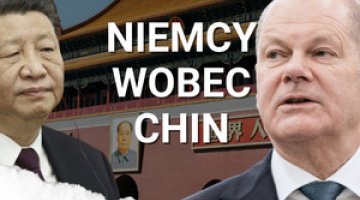The ‘Central Asian Five’ in Berlin: time for a strategic partnership
The first leaders’ summit in the Central Asia-Federal Republic of Germany (C5+RFN) format took place in Berlin on 29 September. The five leaders of the region met with Chancellor Olaf Scholz and President Frank-Walter Steinmeier, both as a group and bilaterally. On the sidelines of the event, the leaders of Kazakhstan, Kyrgyzstan, Uzbekistan, Tajikistan and Turkmenistan attended the economic forum of the German Eastern Business Association, in which 40 prominent German business representatives participated. Meanwhile on the eve of the meeting, Kazakhstan’s President Kassym-Jomart Tokayev participated in the Berlin Global Dialogue forum. In a joint statement after the summit, it was declared that the relationship between the Central Asian countries and Germany had been elevated to the level of a ‘strategic regional partnership’, and that meetings in this format would continue (the next one is scheduled for 2024). In the communiqué, the parties also identified their priority areas of cooperation, among which are energy (including natural resources), climate and environmental protection, contributing to the growth of cooperation in Central Asia, and strengthening people-to-people contacts. Germany announced the creation of a partner- and donor-driven initiative to assist countries in the region to sustainably manage their water and mineral resources.
Commentary
- The visit of the five Central Asian leaders to Germany perpetuates the C5+1 format. Over the past year and a half, meetings of the ‘Central Asian Five’ have been held with the leaders of China, the EU and the Russian Federation (RF), among others. The Berlin summit was preceded by the first-ever talks between the presidents of the region and the US, which took place during the 78th Session of the UN General Assembly on 19 September this year. Central Asia, which has traditionally found itself caught between the Russian and Chinese spheres of influence, is increasing its subjectivity; at the same time it is becoming more important in the political strategies of China, the US and the EU, as can be seen since Russia’s full-scale invasion of Ukraine. Russia’s war against Ukraine shook the region’s sense of security and has influenced the process whereby individual states are expanding different – that is, non-Russian – foreign policy vectors (especially towards China and the West).
- The current greater openness to developing relations with external players other than Russia is also generating increased cooperation within the region itself. As a result, the first attempts to institutionalise the C5 format have been made. At the regional summit in Dushanbe on 14–15 September, the format’s Coordinating Council was established and talks were elevated to the head-of-state level, which is significant given the importance of personal relationships between leaders in authoritarian states. The catalyst for this process was the emphasis (primarily by Western countries) on strengthening regional cooperation mechanisms and promoting meetings in regional formats, as exemplified by the Berlin Summit. The countries of Central Asia, especially Kazakhstan and Uzbekistan, have become partners for the West in political dialogue against the background of a tense international situation, and in the development of potential alternative transport and trade routes – not to mention being possible sources of mineral and energy supplies. On the other hand, the region has proved to be one of the most important routes for circumventing sanctions against Russia, and its importance to Moscow has therefore increased. The issue of compliance with the sanctions regime imposed by the West on the Russian Federation has been the subject of lively dialogue between Western and Central Asian representatives. This was confirmed when the issue was also addressed at the Berlin talks.
- The meeting in Germany was another relatively successful test of the effectiveness of the mechanisms for political coordination which have been developed between the authoritarian leaders of the Central Asian states, following the talks with US President Joe Biden. Internationally, they assess Russia’s aggression against Ukraine in a similarly cautious manner, calling (as they did in Berlin) for a peaceful settlement of the conflict. The leaders of the Central Asian countries have declared that, despite their lack of support for the West’s introduction of the sanctions regime targeting Russia, they are complying with it. In fact, the countries of the region are seizing the opportunity to increase the trade and investment benefits which the Russian invasion of Ukraine has generated for them; they have significantly increased their trade with the West, the Russian Federation and China. Their territories (especially those of Kazakhstan, Kyrgyzstan and Uzbekistan) are being used to circumvent Western restrictions. This has been confirmed by, among other things, the inclusion of companies registered in these countries on US sanctions lists; these are often businesses with Russian capital which were set up after the start of the Russian invasion, or de facto Russian entities that have relocated their activities to countries in the region. President Tokayev exemplified the Central Asian states’ attitude towards the sanctions at a joint press conference with Chancellor Scholz on 28 September. Contrary to media reports, it did not constitute a declaration that Kazakhstan was joining the Western sanctions regime; it was merely a confirmation of Astana’s position, coinciding with the declarations from the other regional capitals.
- From the perspective of the Central Asian countries, it was important that during the Berlin visit they gained political support from Germany for maintaining stability and strengthening cooperation in the region, and increased their economic cooperation with Germany and the broader EU. For the Central Asian countries, the elevation of relations with Germany to the status of a strategic regional partnership is confirmation of the political will of the EU and Germany to develop projects that will benefit the entire region, such as the Trans-Caspian International Transport Route (the so-called Middle Corridor, which will link the region to Europe and China). Further successes for the ‘Central Asian Five’ include the inclusion in the joint declaration of the issue of maintaining humanitarian support for the people of Afghanistan, and the strengthening of advisory and investment mechanisms for the sustainable management of water and mineral resources (meetings on the matter were held with the heads of investment banks). Joint projects (including through EU initiatives) were announced in the areas of developing green energy, hydrogen, fossil fuels and rare-earth metals. For their part, the five countries of the region declared their readiness to increase their exports of minerals to the West (as emphasised, among others, by Kazakhstan in the context of oil supplies and an agreement on lithium mining), their openness to green energy projects, and their willingness to increase labour flows from the region to Germany. In May, Uzbekistan concluded a migration agreement with Germany, and now Kyrgyzstan has signed a similar document with Germany on the occasion of the visit to Berlin.
- The visit of the five Central Asian heads of state to Berlin has strengthened Germany’s cooperation with the region. High-level meetings are becoming more frequent; for example, in June this year President Steinmeier travelled to Kazakhstan and Kyrgyzstan, and Kazakhstan and Uzbekistan hosted German foreign minister Annalena Baerbock. Together with the upgrading of relations to a strategic partnership, this testifies to the growing importance of Central Asia in German policy. Kazakhstan, as the largest country in the region, is playing a particularly special role for Germany; Astana is Berlin’s main economic partner in Central Asia (in 2022 it accounted for almost 83% of the $11 billion worth of trade with the region), and since February this year it has been supplying crude oil to the refinery in Schwedt (Brandenburg: see Kazakhstan is set to supply oil to Germany). The largest recent investment by German capital in Kazakhstan is the wind and solar power plant of the Swedish-German Svevind Energy Group (with an investment value of $50 billion). The deepening of relations with the Central Asian countries is part of Berlin’s broader strategy of diversifying political and economic relations and strengthening partnerships with the countries of Asia, Africa and South America which it has been pursuing since 24 February 2022. As part of this, it wants to strengthen relations with regions and countries possessing energy resources that could become an alternative to those sourced from Russia, as well as minerals imported from China.
- The Berlin summit perpetuates Germany’s image in Central Asia as a state that shapes EU policy towards the region, and which can propose a mutually beneficial and relatively uncontroversial agenda for the development of mutual relations; this policy is in line with the EU Strategy for Central Asia adopted in 2019. During the visit, the German side pledged that it would continue this strategy; for example, it will continue to support existing EU projects such as Global Gateway (the strategy of promoting smart, clean and secure connectivity in the digital, energy and transport sectors) and the Team Europe initiatives, which are aimed at supporting the development of low-carbon economies. For the Central Asian states, the offer is especially attractive as it involves the import of technology and knowledge; at the same time, it is rather a supplement to the direct investments mainly targeted there by China and the Russian Federation over the last 30 years. It will be possible to maintain the current constructive relationship with the West, as the Berlin summit has reinforced – in the absence of strong opposition or confrontational actions particularly by Moscow and Beijing, which have hitherto been the strongest influences on the ‘Central Asian Five’s policies.





